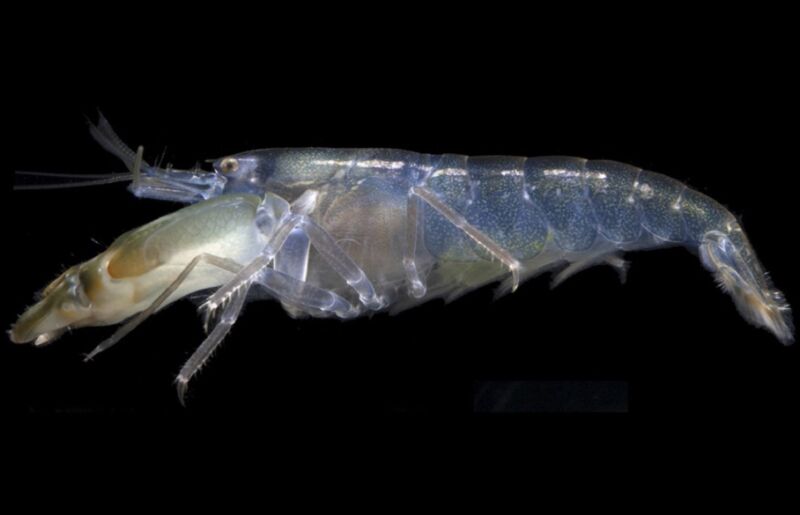This is why the pistol shrimp is immune to its own powerful shock waves

Enlarge / A translucent "helmet" on the bigclaw snapping shrimp's head shelters its brain from the shock waves generated by its claw-snapping. (credit: Kingston et al., Current Biology)
The tiny-but-mighty pistol shrimp can snap its claws with sufficient force to produce a shock wave to stun its prey. So how come the shrimp appears immune to its sonic weapon? Scientists have concluded that the shrimp is protected by a tiny clear helmet that prevents any significant neural damage by damping the shock waves, according to a recent paper published in the journal Current Biology.
The snapping shrimp, aka the pistol shrimp, is one of the loudest creatures in the ocean, along with the sperm whale and beluga whale. When enough of these shrimp snap at once, the noise can dominate the coastal ocean soundscape, sometimes confusing sonar instruments. The source of that snap: an impressive set of asymmetrically sized claws; the larger of the two produces the snap. As I wrote at Gizmodo in 2015:
Each snapping sound also produces a powerful shock wave with sufficient oomph to stun or even kill a small fish (the shrimp's typical prey).... That shock wave in turn produces collapsing bubbles that emit a barely-visible flash of light. It's a rare natural example of the phenomenon known as sonoluminescence: zap a liquid with sound, create some bubbles, and when those bubbles collapse (as bubbles inevitably do), you get short bursts of light. I guess you could call it shrimpoluminescence."
Scientists believe that the snapping is used for communication, as well as for hunting. A shrimp on the prowl will hide in a burrow or similar obscured spot, extending antennae to detect any passing fish. When it does, the shrimp emerges from its hiding place, pulls back its claw, and lets loose with a powerful snap, producing the deadly shock wave. It can then pull the stunned prey back into the burrow to feed.
Read 9 remaining paragraphs | Comments